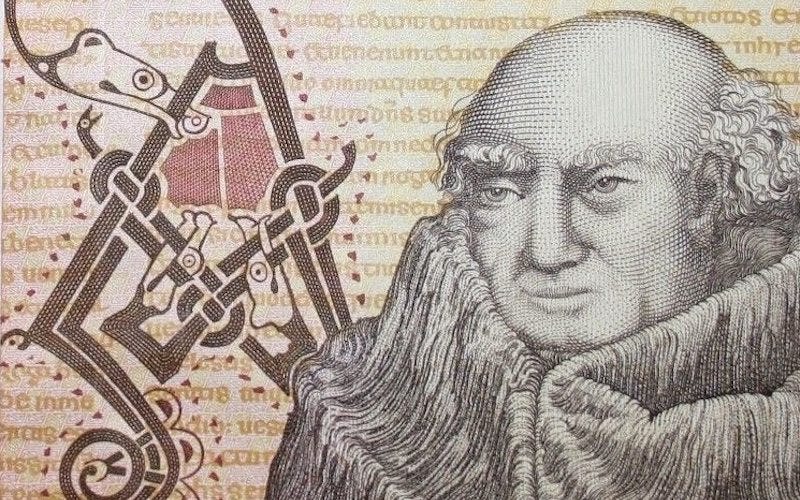John Scotus Eriugena was an 8th century philosopher who offered an interesting take on the Fall of Man. He proposed that humanity's original forms were androgynous forms -- forms without binary sex characteristics -- that were devoid of sexual desire. The fall of Man, as Eriugena sees it, happens when Adam has a sex dream and births sexual desire. From that sex dream, heterogeneity in human beings appeared. Binary gender and Man's loss of His perfect androgynous, sexless form happens because of sexual desire.
Ace icon, right? It's very easy to look at Eriugena's take through an asexual lens and recognize ourselves in it. The primacy of a space without sexual desire. The coding of sexual desire as something that separates us from our "perfect" forms. The holding of a space where sex and the categories sex informs -- namely gender -- aren't supreme. It's very asexual.
But Eriugena is writing from the 8th Century, and nothing of what we understand as asexual today -- in fact, no forms of what we understand as asexuality will be named for another 900 years -- is contemporary to him. "Ace," "asexual" and "asexual lens" are all part of a wholly separate temporality from Eriugena's. "Asexual" has nothing to do with Eriugena and his philosophy. Yet we can feel something asexual within it.
Can we call historically ace-coded things "asexual?" I say, yes... with a disclaimer and some guidance from the transgender community.
Analytical, not identity.
Calling a historical figure "transgender" brings up the same issues with "asexual" noted above. The same temporal discord exists. But trans thinkers have used "transgender" in ways beyond its usage as an identity marker, using "transgender" as an analytical tool to look at and consider any movement from an assigned birth gender, regardless of whether that person would call themselves "transgender" or not. As Susan Stryker and Aren Z. Aizura offer in Transgender History Reader 2, it's a way to reveal "different methods for excavating pasts that definitely contained gender-variant cultural practices." "Transgender" names a way of seeing and a way of being, not necessarily naming a person's identity.
This analytic approach allows transgender writers, historians and theorists to see and claim the transgender experience throughout a history that actively denied and erased it, without forcing a contemporary context and frame on that history. It’s a powerful bit of reclamation that’s still respectful.
We can do something similar with "asexual." We can shift "asexual" away from being solely an identity marker and use it as an analytical tool. It can name ways of being that exist outside of sexual attraction and sex. It can name ways of being that complicate what is considered a “normal” way to relate to sexual attraction and sex. It can name ways of seeing experiences and lives that moved outside of our entrenched sexual borders. Without explicitly naming someone asexual.
With “asexual” as an analytical frame, we can see Eriugena’s conception of the fall of Man as “asexual” without saddling Eriugena with the label “ace.” We’re identifying within this conception a way of seeing and being that’s asexual.
Why does it matter?
Asexual history is short, even if you start from a most generous beginning. Even using Karl-Maria Kertbeny’s inclusion of “monosexuals” in his 1869 arguments against Prussian sodomy laws as some of our earliest mentions, that history is still comparatively fresh. The contemporary understanding of asexuality can be roughly traced to the 1990s, a relative nanosecond against the centuries of named histories that sit at the foundation of other identities. Being able to name and claim an asexual history that reaches further back and entrenches us more deeply in shared human history is an essential reclamation for us.
Asexuality is also prone to historical erasure. It’s easy to wrap asexuality is other people’s clothes. We can pathologize it. We can reconstruct it as a by-product of something else. We can write it off as a person’s disinterest in “love” or “relationships.” Or we can just ignore it, and render it invisible. There are so many ways for asexuality to hide behind history — something that other forms of sexual and gender variance are not able to do — that make it harder to see. The process of “digging up” asexuality as a way of being and a way of living throughout history grounds what we know is true today: we’ve always been here and we always will be.




I’m looking forward to more of this! ❤️🩹